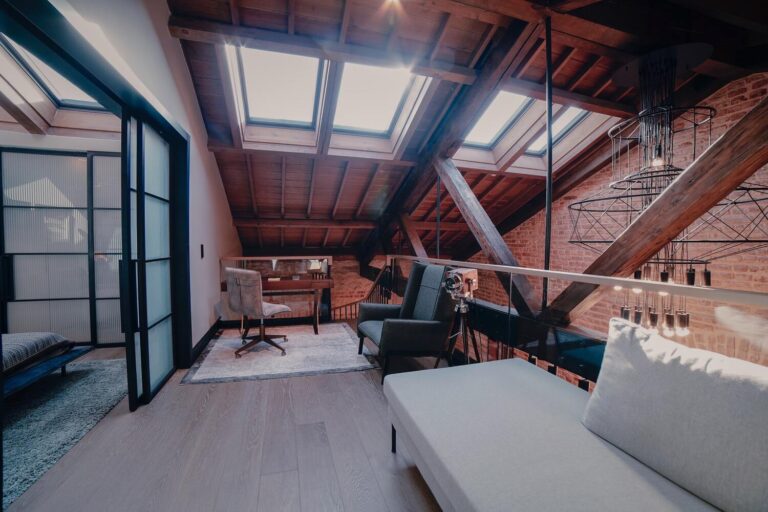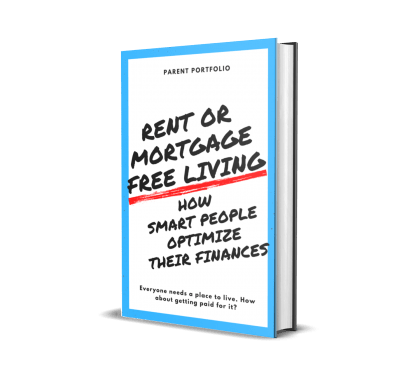Master the Market: A Guide to Finding Your Perfect Single-Family Home

It’s no secret that the price tags of single-family homes — the ideal dwelling in terms of space, independence, and resale value — have spiked, and many current homeowners have been reluctant to let go, but a buyer whose heart is set on a single-family home may be able to follow a playbook to find their prize.
Buying a single-family home isn’t dramatically different from purchasing another type of property, but the process has a few variations.
Here are some guidelines.
What Is a Single-Family Home?
The definition would seem easy enough, but it does vary according to real estate experts and government sources.
The U.S. Census Bureau says single-family homes include fully detached and semi-detached homes, row houses, duplexes, quadruplexes, and townhouses. Each has a separate heating system and meter for public utilities, and has no units above or below.
According to other definitions of a single-family home, the building has no shared walls; it stands alone on its own parcel of land. In some places, the number of kitchens the home has informs the definition.
Unlike a multi-family property, a single-family home is meant for one person or household. Among the types of houses out there, including condos, co-ops, townhouses, and manufactured homes, the single-family home remains the holy grail for many Americans.
Benefits of Purchasing a Single-Family Home
While condos and townhouses may come with shared amenities and lower maintenance, traditional detached single-family homes come with different perks. When people buy a single-family home, they’re looking for benefits specific to this property type.
Spacious, Quiet, and Intimate
A single-family home is typically larger than a condo or townhome. Moreover, since the property is often on its own lot without shared walls, a single-family home offers more space and privacy inside and outside the home.
Possibly No HOA
A co-op association or a condo or townhouse homeowners association sets and enforces rules and collects fees to pay for shared amenities. Anyone who buys into an HOA community must live by the CC&Rs: the covenants, conditions, and restrictions. They can be lengthy, and the ongoing fees can constantly rise.
You may be able to buy a detached single-family home with no HOA and paint your mailbox, or house, pink or purple, unless you live in a city like Palm Coast, Florida, that allows only earth tones and light or pastel hues but no colors that are deemed “loud, clashing, or garish.”
Then again, HOAs are becoming more common for detached single-family homes in planned communities. In fact, about 65% of single-family homes built in 2020 were in an HOA, Census Bureau data shows.
Single-Family Home Appreciation
Generally, single-family homes are in higher demand than multi-family or other properties. Because of the demand, when a person buys a single-family home, the value may faster.
Possibilities for Renovation and Expansion
When people buy single-family homes, they’re buying into the potential to expand or renovate extensively. If the lot is big enough, single-family homeowners could put an addition on the property.
Single-family homes can be an attractive buy simply because of the option to expand in the future, unlike properties with shared lots or walls.
How to Buy a Single-Family Home
Ready to buy a single-family home? Anyone from a first-time buyer to a seasoned investor may find appeal in a single-family home.
1. Draw Up Your Financial Priorities
First, it’s important to look at finances. Your credit scores can have a significant impact on getting approved for a mortgage.
To get a clear read on credit, but not scores, buyers can request free credit reports from the three major credit bureaus.
Additionally, it can be helpful for a qualified first-time homebuyer — who can be anyone who has not owned a principal residence in three years, some single parents, and others — to look into specialty mortgages to see if they qualify for them.
An FHA loan may allow a down payment as low as 3.5%. A USDA loan requires nothing down, and a VA loan, usually nothing down. Some conventional lenders allow qualifying first-time buyers to put just 3% down.
It’s important to know, though, that all FHA loans require an upfront and annual mortgage insurance premium, regardless of the down payment size. VA loans require a one-time “funding fee.” And borrowers with conventional conforming loans who put down less than 20% will pay private mortgage insurance until their loan-to-value ratio drops to 80% and they request removal, or to 78%, when it falls off.
2. Decide on Your Preferred Type of Housing
No two houses are alike, just as no two homebuyers are. Everyone has different tastes and priorities about where they want to call home.
Before hitting every open house in town, consider deciding on must-haves for a home, including privacy, proximity to businesses, size, and style. This could help determine if a single-family home is the right fit.
3. Arrive at Your Price Point
Armed with an understanding of the type of house, it’s time to think about the price point. In addition to thinking about the down payment, buyers will want to calculate a monthly mortgage payment and total loan costs.
Figuring out a price point before looking at homes can take the emotion out of the process. That way, buyers have a budget in mind and a “do not exceed” amount before they fall for a home.
4. Search for a Good Real Estate Agent
Buying a single-family home can be fun, stressful, and fast-paced. Working with a trusted real estate agent can make the process a little easier.
To find a real estate agent, you might consider:
- Reaching out to friends for referrals
- Checking out local real estate association websites
- Using an agent selling homes in the area you want to buy in
You might want to interview more than one agent, asking about their experience, availability, and philosophy. The choice of agent will likely come down to a combination of personality match and experience.
5. Find Your Neighborhood
Armed with an agent and budget, it’s time to dive deeper into neighborhoods. Once again, the choice of where to search will come down to the buyer; there’s no one “right” place to buy a single-family home.
As buyers explore neighborhoods, they might prioritize the following:
- School district
- Walkability
- Proximity to workplace
- Community resources
- Budget
An experienced agent can help buyers distill their priorities and even point them in the right direction. Typically, buyers will have to balance the above elements, as it might not be possible to check all the boxes in a single neighborhood.
6. Tour Homes With Your Agent
Once buyers decide what neighborhoods they want to buy a single-family home in, it’s time to start touring properties.
When touring a single-family home with an agent, try to allot between half an hour to an hour. In the case of open houses, prospective buyers can walk in at any time, but private home tours require a buyer’s agent to gain access to the property.
When buying a single-family home, everyone will have their own checklist of what they want, which might include:
- Listing price
- Number of bedrooms and bathrooms
- Storage space
- Floorplan
- Plot of land
- Deck and porch
- Garage and driveway
It could help to take photos or notes while touring a home to refer to them long after you’ve left the property.
7. Choose a House and Bid
Found a place and ready to make an offer? Time to get a home loan in order. Luckily, buyers will have a good idea of what they can offer on a property based on their finances with the upfront legwork.
Your agent can help with negotiating a house price.
How to make an offer? It pays to understand comps and the temperature of the market, and then:
- Figure out the offer price
- Determine fees
- Budget for an earnest money deposit
- Craft contingencies
With an offer drawn up, it’s time to submit it to the seller and wait for the next steps.
8. Review the Process and Get Ready to Move
Buying a single-family home isn’t a done deal once an offer is submitted. Typically there will be a back and forth, perhaps over offer price or contingencies.
Once everything is agreed on, and the inspection is resolved, it’s time to tally moving expenses and pack up.
9. Head to Closing and Move Into Your New Property
The final part of buying a single-family home is closing day. During closing, the buyer and seller meet with their agents to go over paperwork, and settle any outstanding costs, and formally turn over property ownership.
Next, it’s just moving everything in and settling in. Even after closing, homeownership may feel overwhelming, but there are plenty of resources to make it easier.
FAQ
How much does it cost to buy a single-family home?
Zillow put the typical cost of a single-family home at $337,560 in March 2022. The National Association of Realtors® gave the median sales price of existing single-family homes as $382,000 for the same month.
New construction costs more. The average sales price of new houses sold in February 2022 was $511,000, according to the U.S. Census Bureau and the Department of Housing and Urban Development.
Can you buy a single-family home with no money down?
If a buyer qualifies for a mortgage-backed by the Department of Veterans Affairs or Department of Agriculture, or one issued directly by those agencies, they may be able to purchase a home with no down payment.
What are the most important things to consider when buying a house?
Location (including property tax rate, quality of schools, walkability, crime rate, access to green space, and the general vibe), your ability to cover all the costs, duration of your stay, and square footage may be important.
How much should you have in savings to buy a single-family house?
Enough to cover a down payment, closing costs, and moving fees while ideally preserving an emergency fund.
Disclosures:
SoFi Loan Products
SoFi loans are originated by SoFi Bank, N.A., NMLS #696891 (Member FDIC), and by SoFi Lending Corp. NMLS #1121636
, a lender licensed by the Department of Financial Protection and Innovation under the California Financing Law (License # 6054612) and by other states. For additional product-specific legal and licensing information, see SoFi.com/legal.
SoFi Mortgages
Terms, conditions, and state restrictions apply. Not all products are available in all states. See SoFi.com/eligibility for more information.
Financial Tips & Strategies: The tips provided on this website are of a general nature and do not take into account your specific objectives, financial situation, and needs. You should always consider their appropriateness given your own circumstances.
External Websites: The information and analysis provided through hyperlinks to third-party websites, while believed to be accurate, cannot be guaranteed by SoFi. Links are provided for informational purposes and should not be viewed as an endorsement.
Photo credit: iStock/jhorrocks
SOHL0122005
This article is originally on SoFi.






